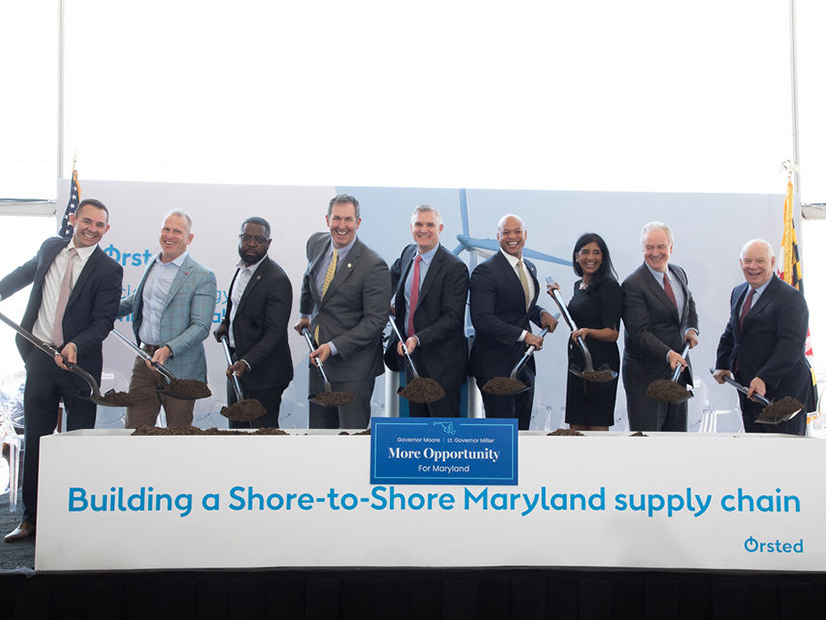
Maryland will allow its lone remaining contracted offshore wind developer to seek higher compensation and other changes for the wind farms it is proposing off the Delmarva Peninsula.
Gov. Wes Moore (D) on May 9 signed into law alterations to the regulatory framework under which four projects were bid into the state’s offshore wind pipeline.
The intent is to preserve what still is in the pipeline and lay the groundwork for contracting new projects.
Ørsted’s Skipjack Wind 1 and US Wind’s MarWin 1 received contracts in Maryland’s Round 1 solicitation for the offshore renewable energy certificates (ORECs) that will subsidize their construction. Skipjack Wind 2 and US Wind’s Momentum Wind won OREC contracts in Round 2.
Ørsted, reeling from cost increases and supply chain constraints with its Northeast projects, terminated the Skipjack contract in January 2024. (See Ørsted Cancels Skipjack Wind Agreement with Maryland.)
The US Wind contracts total 1.1 GW, about 13% of Maryland’s 8.5 GW offshore wind goal. The two projects are advancing through the regulatory process and remain under contract. Maryland wants to keep them under contract. (See Draft Environmental Statement Prepared for Maryland OSW.)
The new law (HB 1296) requires the Maryland Public Service Commission to open a revised Round 2 proceeding to consider revised schedules, sizes and pricing for any contract previously approved in Round 2. It also allows the PSC to consider a request from a project approved in Round 1 to increase the maximum amount of ORECs and modify its project schedule.
The Round 2 requests must include commitments for in-state investment in a local supply chain.
A fiscal analysis prepared for legislators indicates the net financial impact on ratepayers will be the same or less if US Wind is awarded more expensive ORECs, because that in effect would be a reallocation of some or all of Ørsted’s ORECs to US Wind.
Industry trade group Oceantic Network said this last provision is important to keep the Maryland projects on track after the wave of offshore wind contract cancellations along the Northeast Coast in 2023 and 2024.
Oceantic CEO Liz Burdock said in a news release:
“Today’s bill signing demonstrates Maryland’s steadfast commitment to maintaining its strategic manufacturing advantage by working with industry to develop solutions and help reset current markets. The offshore wind industry already contributed massively to the state’s economy and is poised to generate approximately $650,000,000 in investment and support nearly 35,000 jobs.
“Today’s bill contains provisions that will buttress efforts to realize offshore wind investments in facilities like Tradepoint Atlantic and the Port of Baltimore, as well as spur investments beyond Maryland in ports and manufacturing facilities that can be utilized for projects across the East Coast. Along with the Bureau of Ocean Energy Management’s upcoming Central Atlantic Lease Auction this summer, this bill and future efforts from Maryland will place the state’s 8.5-GW goal firmly within reach.”

